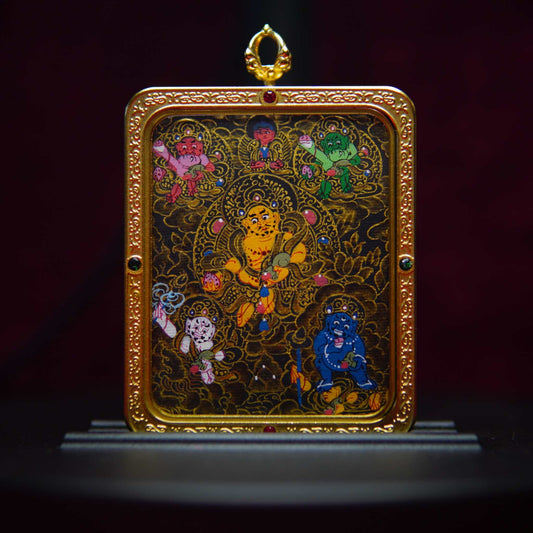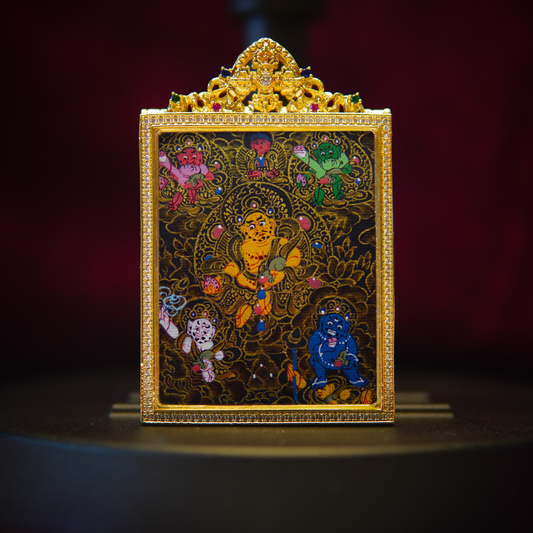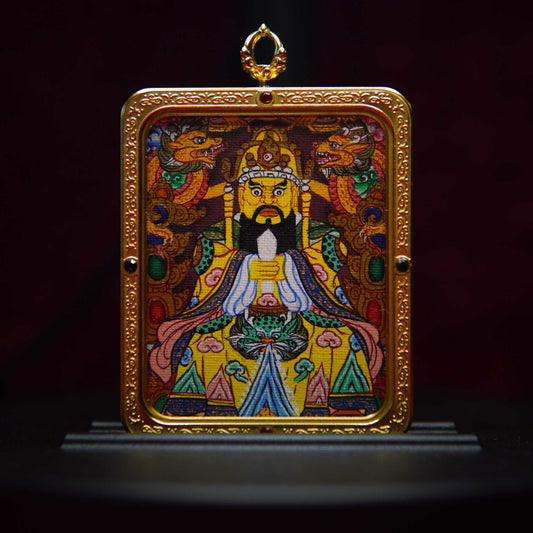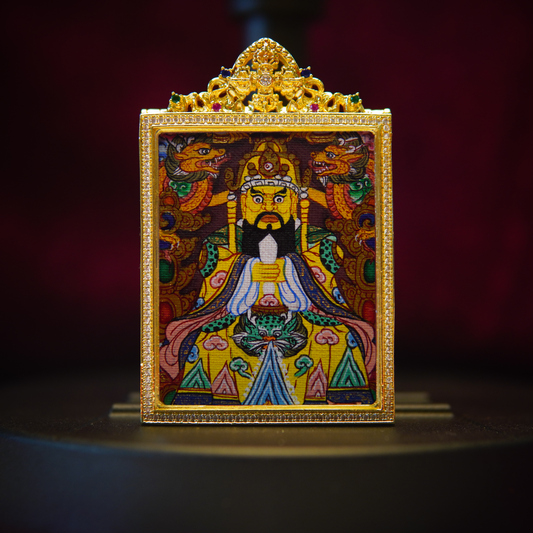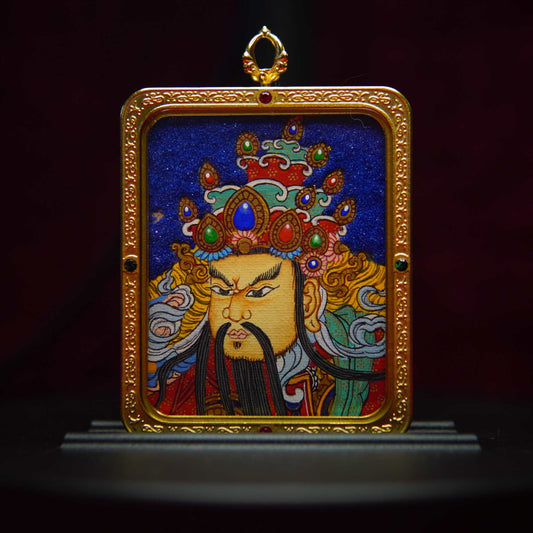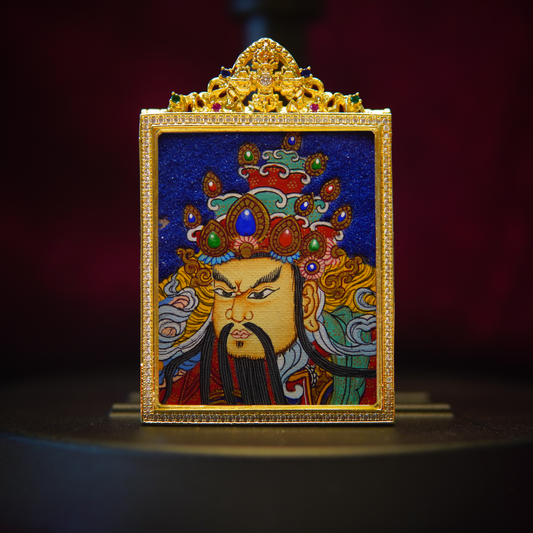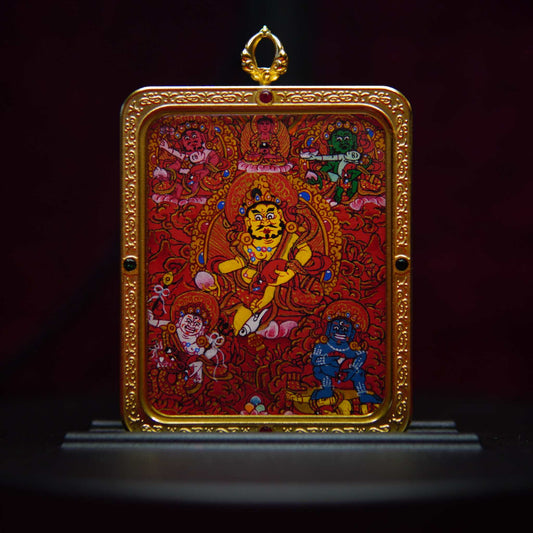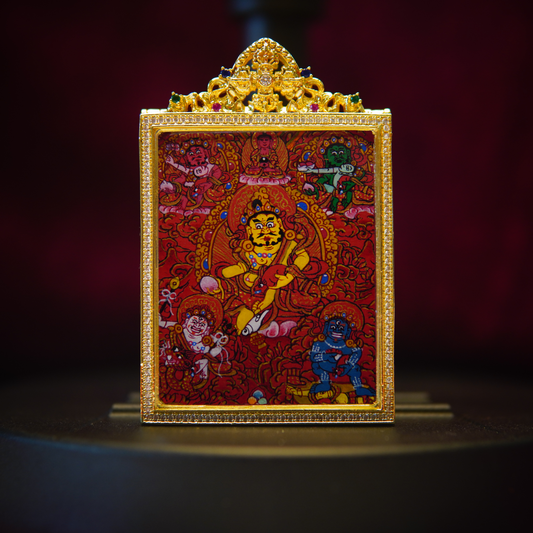The Story of Green Tara: The Swift Liberator in Tibetan Buddhism
TapitaGreen Tara, one of the most cherished deities in Tibetan Buddhism, is known as the "Mother of Liberation" and the embodiment of active compassion. Her story transcends mythology, carrying deep spiritual meaning and timeless relevance for practitioners across the world. This blog explores the origins, legends, and symbolism behind Green Tara, highlighting why she continues to be a powerful force of protection, healing, and enlightenment.
Who Is Green Tara?
Green Tara (Sanskrit: Syamatara) is one of the 21 emanations of Tara, a revered female bodhisattva who vowed to be reborn always as a woman to assist all sentient beings in achieving enlightenment. She represents the dynamic, active aspect of compassion, ever-ready to step in and help those in need.
In Tibetan, she is known as "Jetsun Dolma" and is often depicted as a radiant green figure seated in a posture of ease and readiness, her right leg extended to symbolize her willingness to spring into action.
The Origin Story of Green Tara
According to ancient texts, Tara emerged from a tear of Avalokiteshvara, the Bodhisattva of Infinite Compassion. As Avalokiteshvara wept for the suffering of beings in samsara, one tear fell to the ground and formed a lake. From this sacred lake, a blue lotus bloomed, and from its center rose Tara.
Another powerful story tells of a devout princess named Yeshe Dawa ("Moon of Wisdom"), who lived millions of years ago. She developed great realization through deep practice and made a vow to attain full enlightenment as a woman. Monks suggested she should pray for rebirth as a man in order to reach Buddhahood, but she rejected the idea. She declared:
"There is no distinction between male and female, the mind has no gender."
She then vowed to always be reborn in female form until all beings were liberated. Through countless eons of practice, she eventually manifested as Green Tara, a fully enlightened being.
Symbolism of Green Tara’s Iconography
Every aspect of Green Tara’s depiction holds symbolic meaning:
-
Green color: Symbolizes vitality, active compassion, and the element of air. Green is also associated with healing and protection.
-
Seated posture: Her left leg is folded in meditation, while her right leg is extended, ready to take immediate compassionate action.
-
Right hand: In the gesture of giving (varada mudra), offering blessings and boons.
-
Left hand: Holds an utpala (blue lotus) that blooms beside her ear, symbolizing purity and wisdom.
-
Crown and adornments: Represent her enlightened status and divine power.
She is often surrounded by a halo of light, seated on a lotus throne, radiating both peace and strength.
The Mantra of Green Tara
One of the most recited mantras in Tibetan Buddhism is Green Tara’s:
"Om Tare Tuttare Ture Soha"
This mantra is believed to remove fear, eliminate obstacles, heal illness, and grant swift assistance. Practitioners chant it to invoke her presence and receive her blessings in times of danger, fear, or uncertainty.
Green Tara’s Role in Daily Practice
Green Tara is especially beloved for her accessibility. Unlike other deities who may require complex rituals or initiations, Tara responds quickly to sincere prayers. Many devotees establish a simple daily practice that includes:
-
Chanting her mantra
-
Visualizing her radiant form
-
Offering flowers, incense, and light
-
Asking for guidance, protection, and inner peace
She is also one of the main deities invoked during healing ceremonies, protection prayers, and empowerments in Tibetan Buddhist traditions.
Green Tara’s 21 Forms
Green Tara is considered the principal form among the 21 Taras, each representing a different quality such as longevity, healing, overcoming fear, or pacifying conflict. These 21 manifestations are praised in the famous prayer "Praises to the 21 Taras," often recited to invite her multifaceted blessings.
Why Green Tara Is Relevant Today
In today’s fast-paced, uncertain world, Green Tara’s energy feels more essential than ever. She represents:
-
Feminine wisdom in action
-
Protection from fear and harm
-
Emotional resilience and healing
-
Speedy removal of inner and outer obstacles
Her image, mantra, and story serve as spiritual tools for empowerment, especially for those navigating stress, anxiety, or personal transformation.
Conclusion: The Living Presence of Tara
Green Tara is not just a figure of the past—she is a living symbol of love in motion. Through her story, mantra, and compassionate presence, she continues to guide countless beings toward inner peace and liberation.
Whether in a thangka, a statue, a pendant, or your heart, Green Tara offers fearless protection and swift compassion, whenever and wherever she is called upon.

